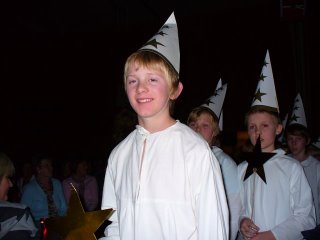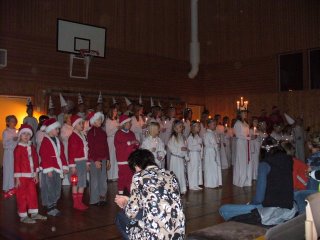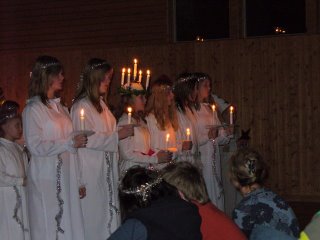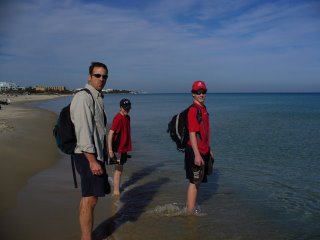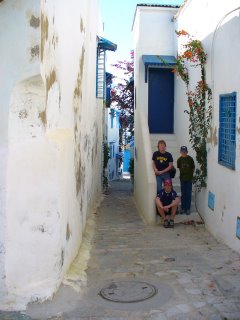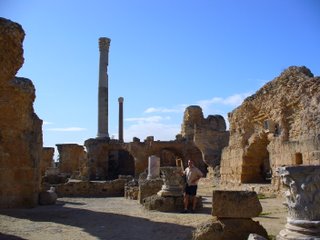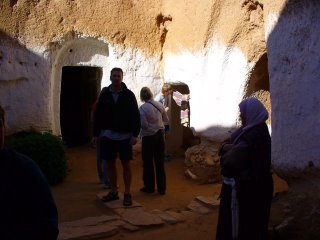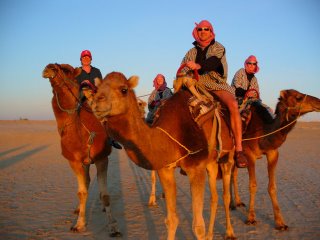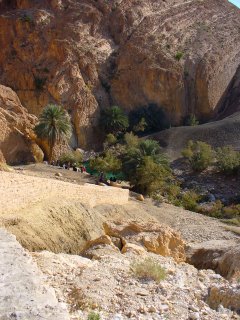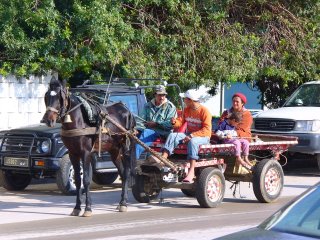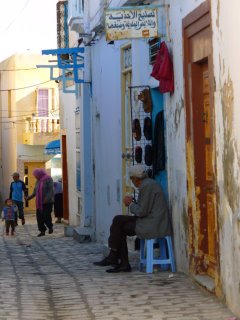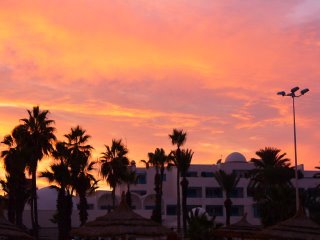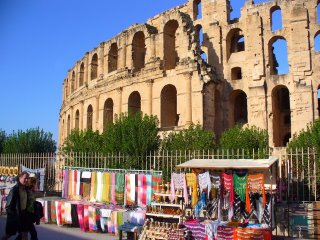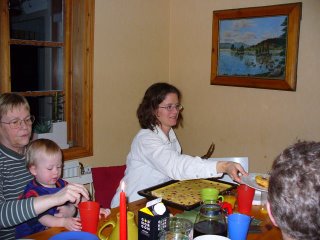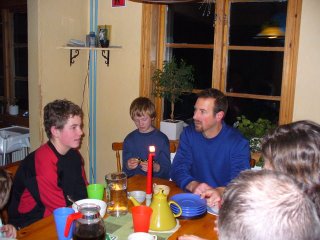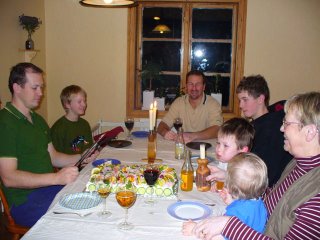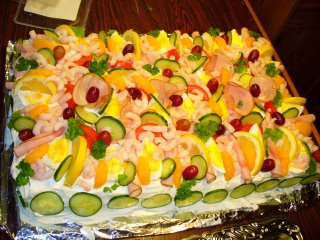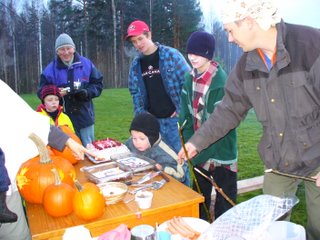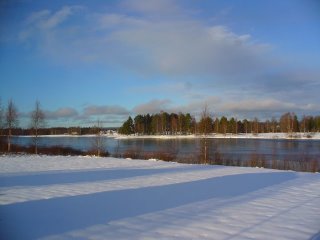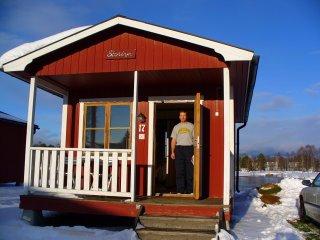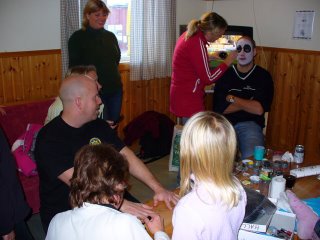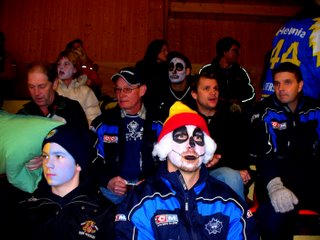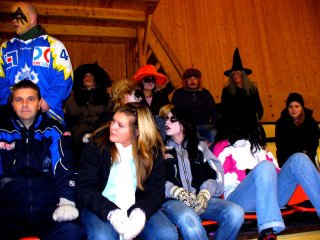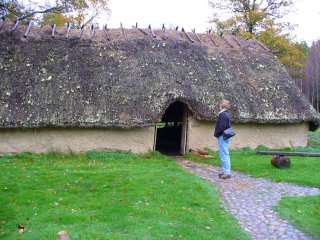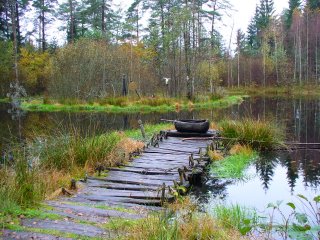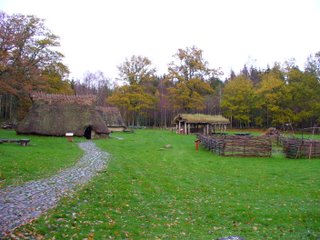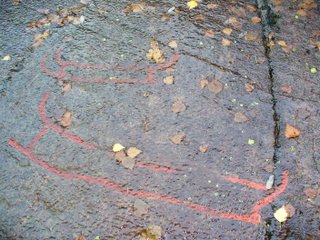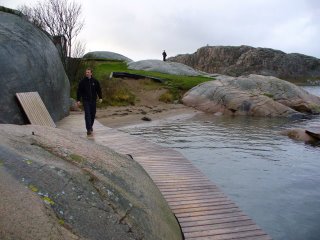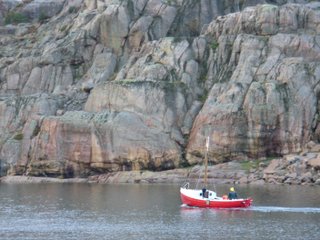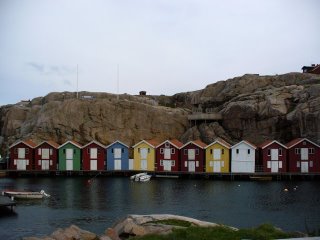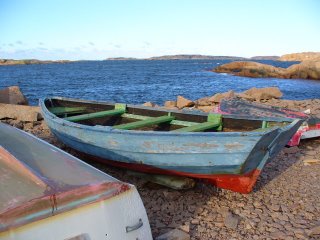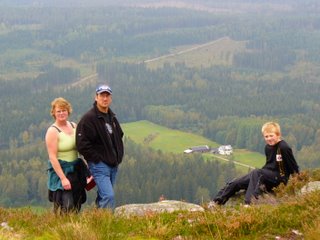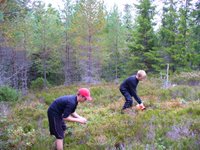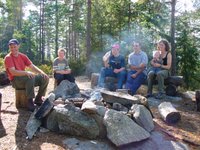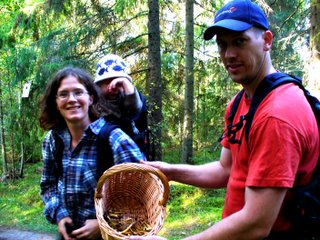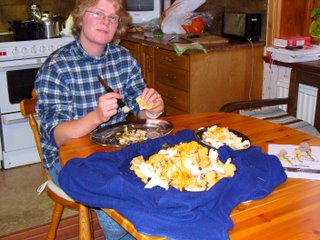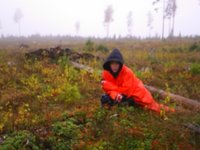
We have been fortunate enough to have a chance to go moose (Älg) hunting in Sweden. Dunc got to spend a day with his aunt Hol hunting with the local hunting group/team. M and K got to spend a day hunting with J's hunting party near J's school. Everyone heads out in the woods (skog) in the second week of October.
Hunting in Sweden is very different from hunting in Canada. First of all, you must be a land owner to hunt, or you must purchase the right to hunt from a landowner who choses not to hunt. Secondly, you must join a hunting team or club which controls/organizes the hunt in a particular area. Costs vary depending on the team you join, the size of the area, and the resources the group uses. The group leaders have a big meeting with some government representative to establish the bag limit for the area for the season. The area where we hunted had a bag limit of 17 moose with those being dry cows, 1st year calves, and spike bulls. Some areas are allowed one or two big bulls. Many parties will choose not to take big bulls as they are trying to improve the moose population by having better bulls. There was a big controversy this season as the hunting party in the area next to ours knowingly exceeded their quota of big bulls in spite of the agreement not to take big bulls. No repercussions other than much toungue wagging and shame brought upon that group.
Hunting is very structured within each hunting group. Each area has set "hunts" which area specific areas which have been mapped out within certain boudaries, each natural (eg lakes) , or man made (cut blocks, roads, houses, etc). The hunt for the morning might be an area about 3-5 sqkm where everyone is set at a "pass" or post around the perimeter. The passes are all numbered and ribboned and positioning for the morning hunt is established by drawing a card at the 7:00 AM prehunt meeting. The parties drive to their access point for that morning's hunt and are distributed at their posts by a that morning's group leader. The group leader has the farthest post from the access point, so he drops everyone off at their pass on the way to his pass. Everyone has a radio but only the group leaders report in when everyone has reached their pass. Of course any moose sightings are reported by radio. If anyone has an opportunity they may shoot an animal but of course they must not shoot towards their team members who are posted 100-200 metres away. Notice hunters are all dressed in flourescent hats, at least.
Once everyone is posted the dog handler(s) release their moose hunds to work the area. (It is illegal to hunt moose without dogs in Sweden) The dog we hunted with was equiped with a GPS/SAT phone which allowed the owner to phone the dog to locate his position.
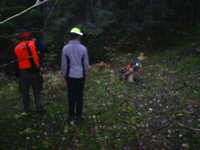
The dogs are trained to bark continuously after they have cornered a moose. Which way the dogs will work the area has already been established but it may change depending on what is reported back on the radios. The hunt lasts from 2-3 hours depending on the size of the area and the number of dogs working the area. Lunch is usually in a rustic shelter around a fire where hunters roast sausages/weiners (korv) and drink coffee.
This form of hunting is almost military in its' planning and deployment, but it is also very social. It is also very effective as we shot two calves that day; one on the morning
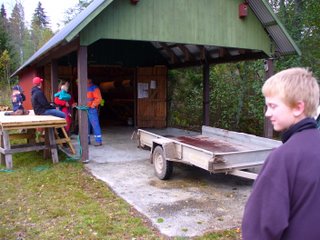
hunt and one on the afternoon hunt (different areas). Different subgroups take turns field dressing the moose and transporting them back to the slaktbod (butcher/slaughter house) usually in a utility trailer behind a Volvo. The group has about 40 members and they had 13 moose of the 17 at the end of moose hunting week. The season continues on weekends, but only the die hard hunters continue on into November.
There is quite a social element to the whole hunting process as all of the locals get together for the hunt and butchering of the moose. As mentioned earlier the moose is hauled back to the butcher house or slaktbod. Each hunting team has their own slaktbod where they skin, hang, butcher, and distribute moose meat. These are super efficient and
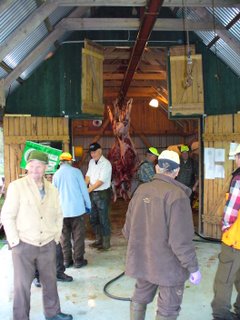
organized buildings with winches and tools of the trade for butchering moose quickly and easily. Very impressive process from trailer to hanging in a clean, cool slaktbod. Meat is distributed in a mysterious process where land owners, both hunting and non-hunting, show up to get their share and other hunters get theirs as well. Meat is in a pile or lump and it is up to the recipient to bring a bag or bucket to the slaktbod to transport their meat home.
The next step is to discern what cut of meat you have recieved and to process it accordingly. This is one area where the traditional Swedish efficiency and precision seemed to be lacking. However, I only saw two hunting groups and I may not have understood exactly what process was taking place in the slaktbod.
The local (Stöpafors) hunting group have a big party at the hall on top of the nearby mountain, Tosseberg Klätten. This mountain is a huge local landmark as it has a restaurant, observation tower and it is the highest point in Varmland (our province). The party is
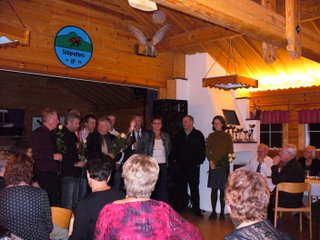
a great chance to meet the locals and to have some fun. Hol, J, H, and I had an interesting bus ride up the mountain, some drinks, a tasty traditional Swedish meal,awards, and a live band all in a beautiful log building. The local moose hunters celebrate and let loose after a successful season.
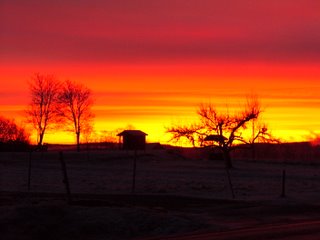 We have been watching the rising and setting sun here - how does it compare to what we get in PG? We seem to get much longer sunrises and sunsets. The sun doesn't rise until quite late and sets early, but there is a longer time when the sun is not up when it is light. For example, in the pictures here:
We have been watching the rising and setting sun here - how does it compare to what we get in PG? We seem to get much longer sunrises and sunsets. The sun doesn't rise until quite late and sets early, but there is a longer time when the sun is not up when it is light. For example, in the pictures here: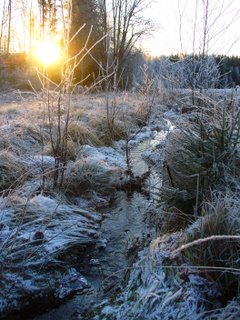
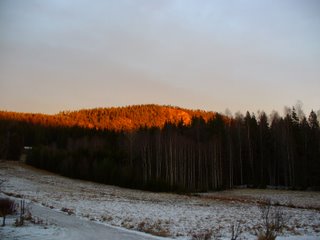 This picture shows the sun setting behind our little creek at 1:42 pm on Dec 21/06. It was still light for another hour and a half.
This picture shows the sun setting behind our little creek at 1:42 pm on Dec 21/06. It was still light for another hour and a half. 